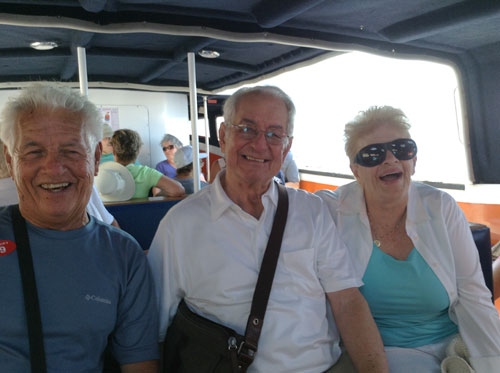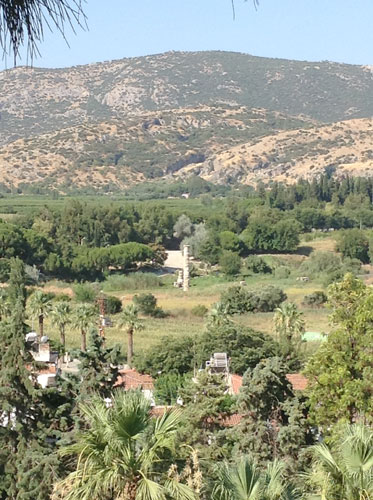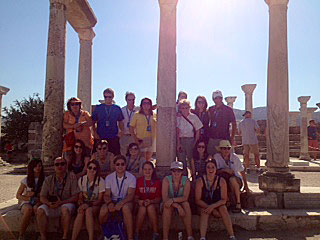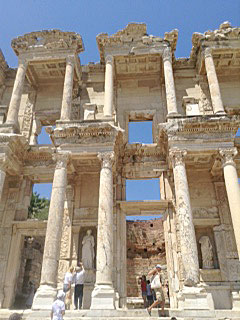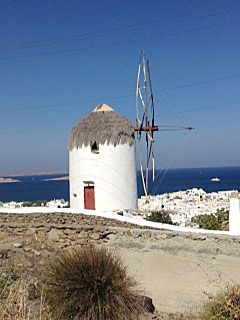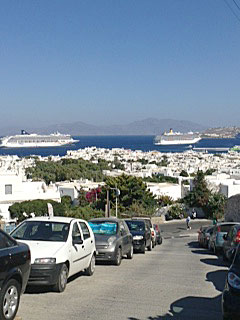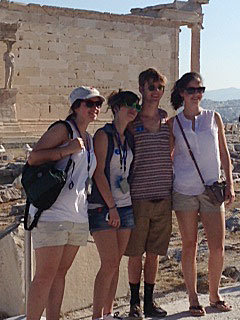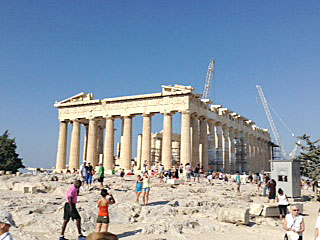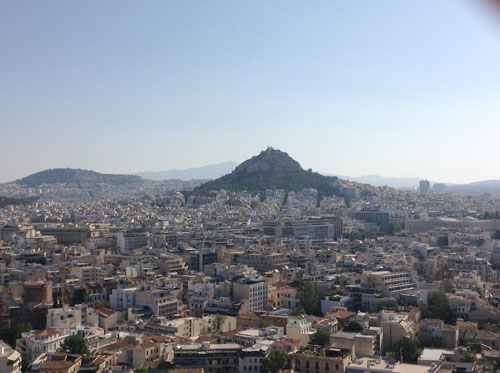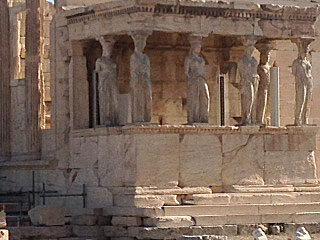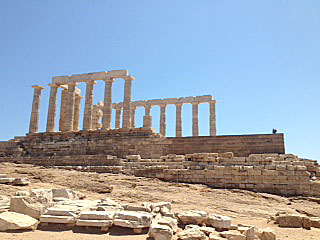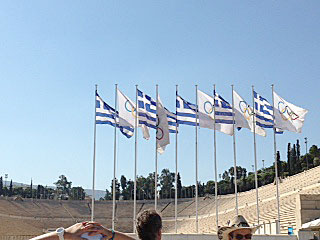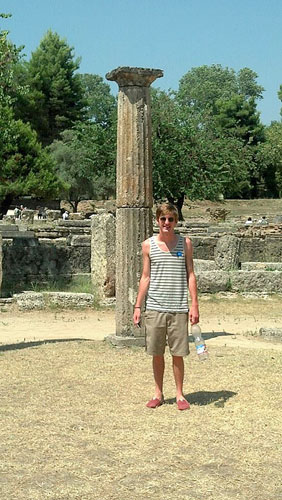
Dear Friends:
Our cruise and tour of the Mediterranean has been a wonderful experience for us all, from the oldest to the youngest, and how extra special to experience it all together.
My brother Dan Buckley, my brother-in-law Bill Martin, and me enjoying the sights and our time together.On Saturday, our ship docked at Kusadasi, Turkey, and we all enjoyed our tour of nearby Ephesus, which included the house of the Virgin Mary, the ruins of the church and tomb of St. John the Apostle, and the Celsus (or Celcius) Library.
This picture was taken near the Virgin Mary’s House. It is believed that St. John the Apostle brought Mary to the area of Ephesus when he traveled there to share Christianity with the Turks.
The gang’s all here! The Basilica of St. John was a great church in Ephesus constructed by Emperor Justinian in the 6th century. It stands over the believed burial site of St. John, who is identified as the apostle, evangelist (author of the Fourth Gospel), and prophet (author of Revelation).
All that remains of the glorious Celsus (or Celcius) Library at Ephesus is its impressive façade. It was built in honor of the Roman Senator Tiberius Julius Celsus Polemaeanus by his son Gaius Julius Aquila. It is believed that construction of the library was completed around 135 A.D. It was designed to store 12,000 scrolls and to serve as a monumental tomb for Celsus, who is buried in a sarcophagus beneath the library in the main entrance area.Our next stop was Mykonos, which is a Greek island in the Aegean Sea. In Greek mythology, Mykonos was the location of the battle between Zeus and the Titans, and the island was named in honor of Apollo’s grandson Mykons.
One of Mykonos’ many lovely windmills.
Neither of those two cruise ships was ours. Mykonos is a very popular tourist destination, but it’s easy to understand why when you see how beautiful it is.We were in Athens, Greece’s capital city and one of the oldest cities in the world, on Monday. Athens is named after the Greek goddess Athena. Many famous names from ancient history are associated with Athens, including Socrates, Aristotle, and Plato.
Enjoying Athens and one another, L. to R.: my grandchildren Sofia & Michela Ghezzi, Sean Donnelly, and Chiara Gabellieri.
The Parthenon in Athens is the most famous surviving building of Ancient Greece and one of the most famous buildings in the world. It has stood atop the Acropolis of Athens for nearly 2,500 years and was built to give thanks to Athena, the city’s patron goddess, for the salvation of Athens and Greece in the Persian Wars. Throughout its long life, the Parthenon has functioned most importantly as a Greek temple but has also been a treasury, a fortress, a church, and a mosque. Today, it is one of the most recognizable icons and popular tourist attractions in the world.
The view from the Parthenon.
The Erechtheion is thought to be the youngest temple on the Acropolis. Construction was begun around 450 B.C., and it was built next to an old temple that it was designed to replace. It is named after the ancient king Erechtheus (or Erechthonios), who was also thought to be a god. The building was designed to incorporate and unite several old, existing shrines that were on this particular part of the Acropolis. Those honored at the Erechtheion include King Erechtheus/Erechthonios, Athena, and Poseidon.
The Temple of Poseidon, god of the sea, sits on Cape Sounion, near Athens. Construction on a grand Temple of Poseidon began around 500 B.C. but was never completed; the temple and all the votive offerings were destroyed by the Persians in 480 B.C. The Temple of Poseidon that now stands at Cape Sounion was built in 444 B.C. atop the older temple ruins.
This is the 1896 Olympic Stadium in Athens. The 1896 Summer Olympics, formally called the Games of the I Olympiad, were the first modern Summer Olympic Games and the first Games since Roman Emperor Theodosius I banned the Ancient Olympic Games in 393 A.D. as part of the Christian campaign against paganism. They were held April 6-15, 1896.Tuesday found us at Katakolon and Olympia in Greece. Katakolon is a port-village on the southwestern part of Greece. It is the gate by sea of famous Ancient Olympia, birth land of the Olympic Games, the first of which took place in Olympia in 776 B.C.
My grandson Sean Donnelly at Olympia.That’s all for now. I’ll be back in Virginia next week, and I’ll have more pictures to share with you.
Love,
Pat
P. Buckley Moss Galleries, Ltd
74 Poplar Grove Lane
Mathews, VA 23109
(800) 430-1320
©P. Buckley Moss 2013
